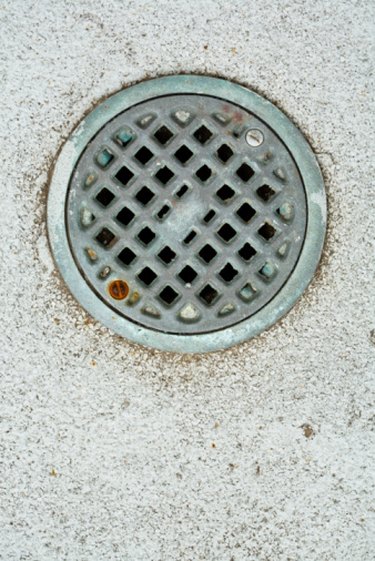Things You'll Need
Measuring tape
Screwdriver
Wrench
Plumber's tape

When flood water overloads the main sewer lines, it backs up into the basement floor drains of many homes. To stop sewage backflowing into your home, you must physically block it. The easiest way to do this is with a drain plug. There are many types of drain plugs available at most home improvement stores. Most slide easily into the drain to block the flow of water in or out. They must be removed once the threat of flood is gone or interior water will not drain.
Step 1
Measure the diameter of your basement's floor drain. Take those measurements with you when you purchase the drain plug to find one of the right size.
Video of the Day
Step 2
Remove the floor drain's screws, unscrew it or simply lift it up to expose the pipe beneath it.
Step 3
Place the plug into the floor drain pipe according to the manufacturer's instructions. If it contains threads that screw it into place, wrap plumber's tape around them before installation to make sure that the seal is watertight. Then screw it into the threads that held the drain cap in place. Non-threaded plugs may simply be pushed into place. If you have a floating drain, you must tighten the bolt on top of the plug with a wrench to expand the rubber band and secure the plug into place.
Tip
Float plugs are the easiest type to maintain. Their interior floating ball allows water to flow out, but not in so there is no need to remove it once the threat of flood has passed. Check them annually to make sure that the plug is still in working order. If you do not install a float plug, practice inserting your emergency plug when conditions are normal.
Video of the Day